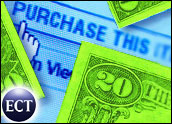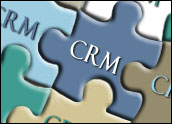
Social networking technology. Blogs. Evite applications. Discussion forums. These, of course, are the heart of what has come to be called “Web 2.0.” Now, what was once strictly a toy for consumers is transforming itself for corporate use. In the case of the sales function, that would be Sales 2.0.
A typical example might be an invitation sent to a prospect — perhaps a visitor on a Web page — who then clicks through to talk to a sales rep. Another might be an application that creates a home page for a prospect with specific information on a product or pricing that they have requested.
Until recently, such applications were seen as one-off plays by small startups. Now, though, a movement is under way to classify and clarify this latest version of sales-related technology.
VendorsWebex,Landslide,Genius.com,Dreamfactory,InsideView andSales Spider are sponsoring an event, theSales 2.0 Conference on the subject at the end of this month, which they say is the first in the industry. Chief among the topics of discussion will be what defines Sales 2.0, what is the size of the market, and how it fits with other applications.
Surprisingly, it is only the latter question that is easy to answer, for now.
Definitions and Market Size
First, there is the matter of definition. Sales 2.0 means integrating the power of Web 2.0 technologies with proven sales techniques to increase sales velocity and volume, according to the conference’s Web page. Want another? “Sales 2.0 are edge of the enterprise applications, whereas as CRM applications are closer to the core, operational elements,” Razi Imam, CEO of LandSlide, told CRM Buyer.
Sales 2.0 is a collection of technologies that help sales people personalize information for customers and interact with them rapidly, David Thompson, CEO and cofounder of Genius.com, told CRM Buyer. “Whether it is Web conferencing or using Genius to talk to people — at bottom, it is all about better targeting and better serving your customer through the Web.”
Sizing the market — that is, estimating its revenues for a given period — is still a work in progress as well.
The total market is about US$7.3 billion, Imam said. Taking other related estimates — for CRM and strategic selling — from research firms such as Gartner and Frost & Sullivan, that figure drops to $2 billion, he added.
“My personal opinion that the Sales 2.0 market is bigger than the CRM market by virtue of the fact that these are tools that end users like to use and want to adopt,” Thompson said.
Taking on CRM?
These matters of definition and market size are finer points, though, of concern only to the vendors. For buying companies, as with the introduction of any new technology or approach, the key question is how does Sales 2.0 fit in with their preexisting applications and infrastructure — in this case, CRM technology.
The bad news, at least according to these vendors, these technologies can fulfill a promise that CRM made but never delivered: a more effective sales person. The good news is that, these products tend to be cheaper and easier to use and able to plug in rather effortlessly into other applications.
Another way to look at it, Thompson said, is that the two technologies are mirror images of each other, with neither able to supplant the other.
“CRM came first because it was a legacy application — the result of the command and control nature of larger organizations where you had a sales manager demanding reps enter sales data and so on. In other words, at the end of the day it is a management tool,” he explained.
Sales 2.0, by contrast, is about the end user or sales rep, he said.
It can’t replace CRM, he added. “There will always be a need for a contact management system of record, for example. CRM is indelibly embedded in the fabric of the enterprise — but it has not proven to be enough.”























































